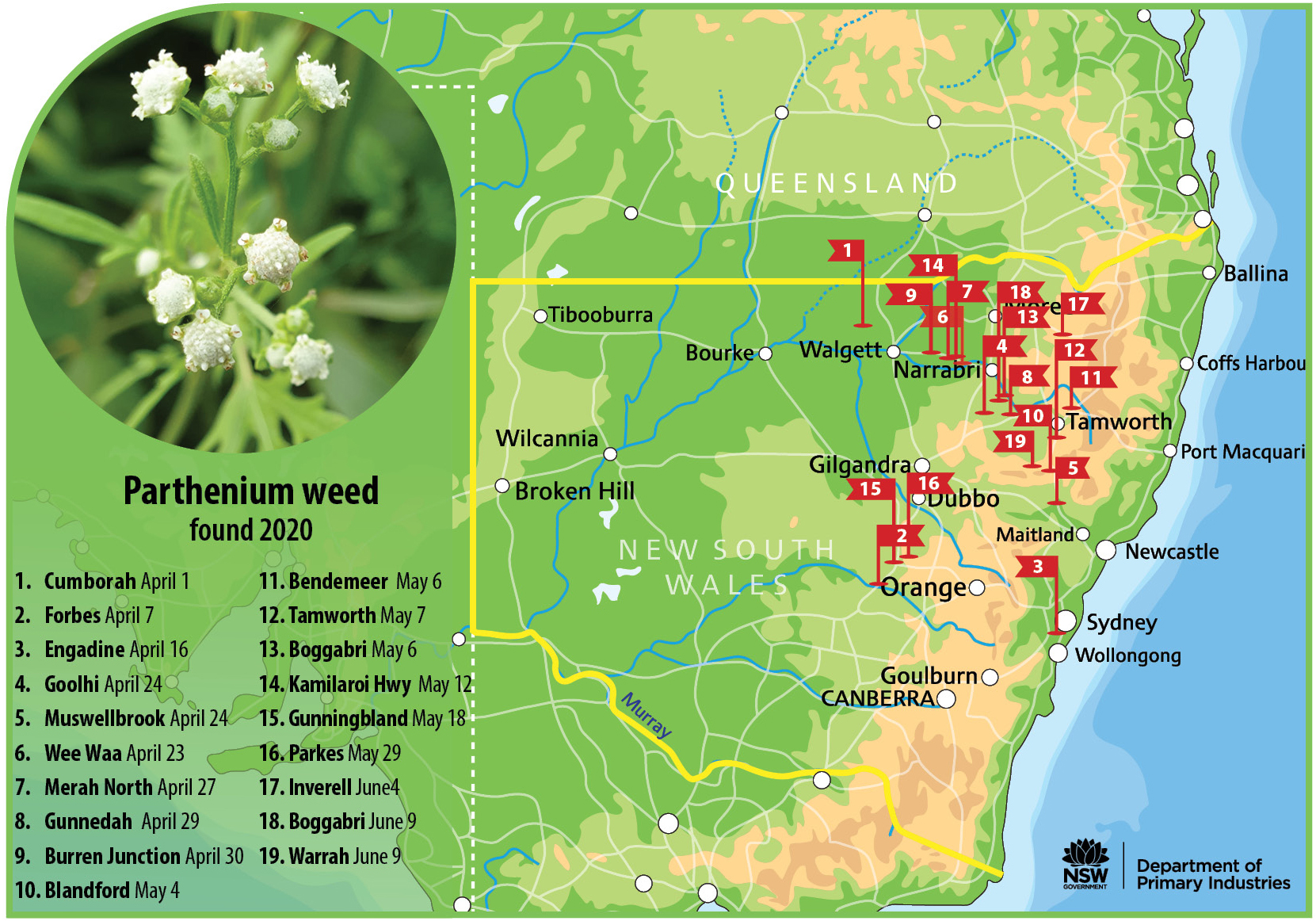
Community helps keep our state parthenium-free
17 Jun 2020

NSW Department of Primary Industries (DPI) today confirmed that 19 parthenium weed infestations have been identified and managed since April 1 this year, as the united efforts of the community and government agencies continue to keep the devastating weed in check.
DPI State Priority Weeds coordinator, Philip Blackmore, said the flowering window for the weed, Parthenium hysterophorus, is closing and aging plants will be less recognisable as winter sets in.
“Parthenium plants found last week in the Upper Hunter were still growing and flowering despite recent frosts and we urge people in the central and northern parts of the state to remain vigilant and call us with any suspected sightings of the weed,” Mr Blackmore said.
“Thanks to the actions of local landholders who have contacted their council weeds officers or the department when they found suspect plants we are keeping the state free of parthenium.
“Local councils are actively inspecting high-risk areas, including roadsides and areas where stock have been fed, and together we have successfully treated and managed all 19 infested sites to prevent further spread of the weed.”
This year has seen the highest number of parthenium outbreaks since 1999, with two of the infestations the first recorded findings of parthenium east of the Great Dividing Range.
Investigations are underway to trace the origins and distribution of livestock feed and hay, which were the suspected sources of several infestations.
Other infestations, including those along highways and roads, most likely came from vehicles or machinery which have travelled through Queensland where parthenium weed covers an area of 18 million hectares.
DPI continues to coordinate statewide surveillance of known high-risk areas in collaboration with local councils, weed control authorities and Local Land Services regional weed coordinators.
People who suspect they have seen parthenium weed can call the NSW DPI Biosecurity Helpline, 1800 680 244 or their local council for plant identification and assistance.
Parthenium weed spreads rapidly, is dangerous to grazing animals and reduces crop and land values. Contact with the plant or pollen can cause serious allergic reactions in people.
NSW has benefited from the successful program to find and eradicate parthenium weed since 1982.
More information about parthenium weed and how to identify the plant at different growth stages is available from the DPI website; with an online form to record any weed sightings.
Hi-res images of NSW map with 19 parthenium infestation sites, parthenium weed and inspecting high-risk areas available from bernadette.york@dpi.nsw.gov.au
Media contact: Bernadette York 0427 773 785

